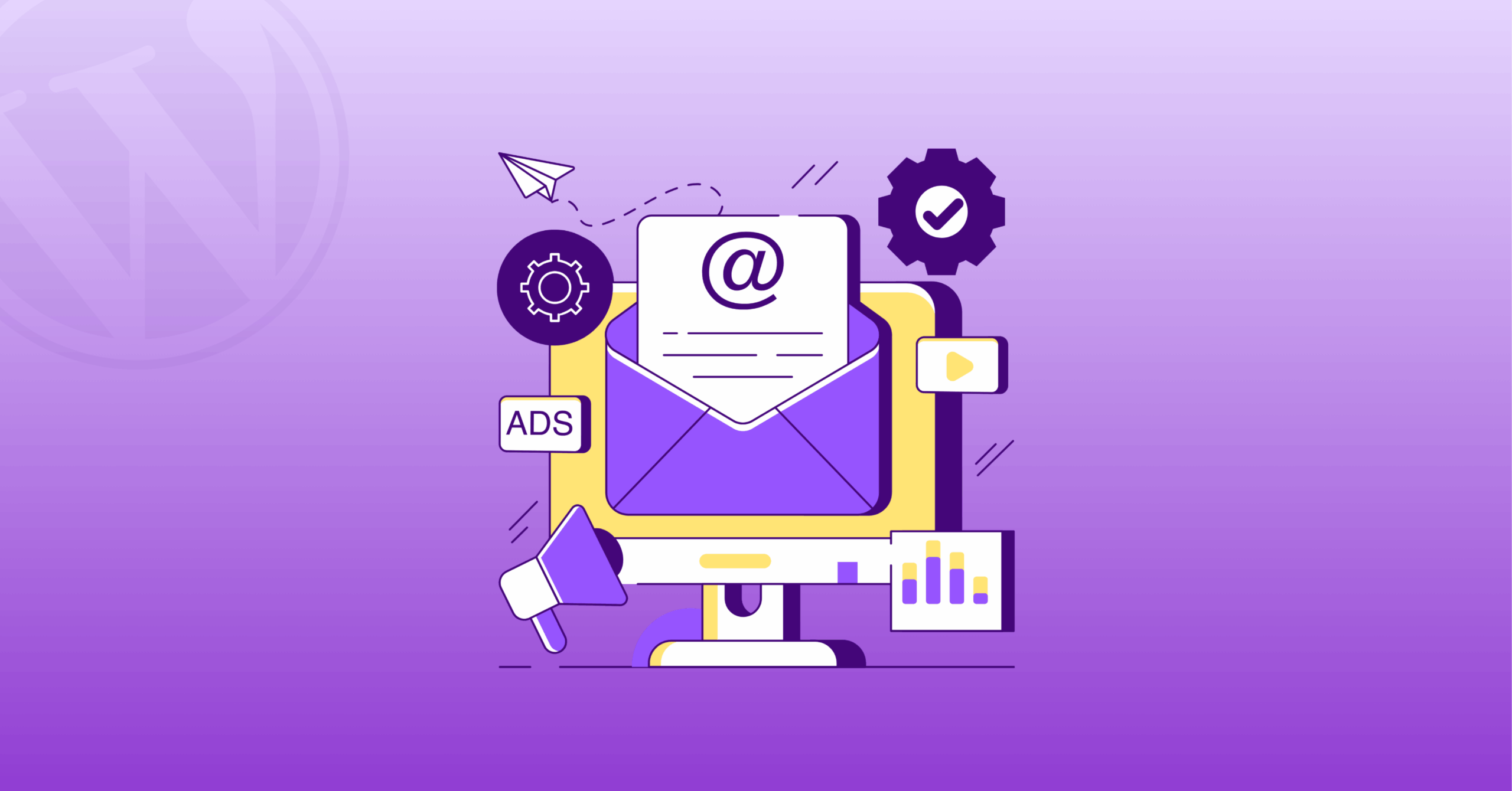
Email Compliance Guide: Must Know Rules, AI Risks, and Top Brand’s Email Compliance Examples
Email is one of the most direct ways for brands to connect with their customers. Whether you are a small business or a large corporation retaining a wide audience, email marketing is the key.
But with that power comes responsibility. Every message you send carries the power to build trust or break it. Email compliance gives you the safeguard against legal issues, spam complaints, and damaged sender reputation.
So in this blog, we’ll discuss how to stay compliant, protect your reputation, and make every email work for your brand.
What is Email Compliance?
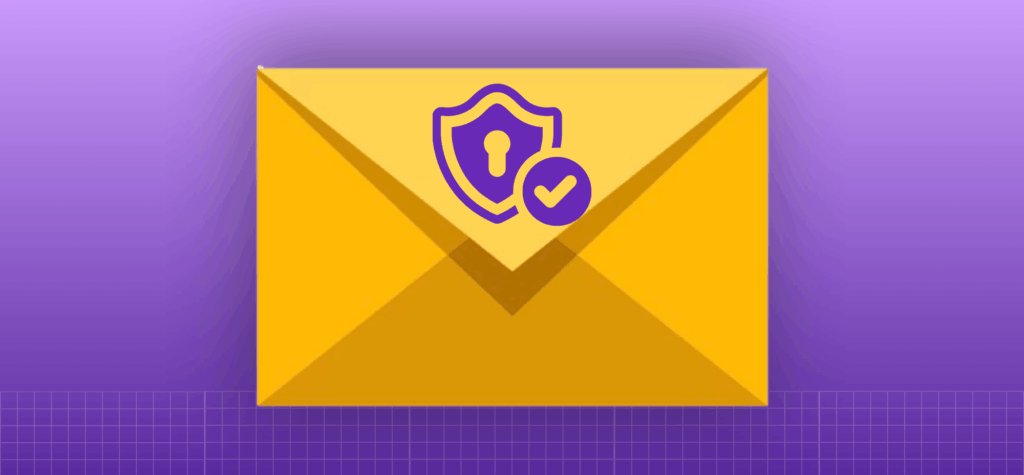
Email compliance means following laws and best practices to send emails responsibly, ensuring recipients have given permission, their data is protected, and they can easily unsubscribe.
Its main goal is to protect recipients’ privacy, ensure consent, and maintain trust, while also safeguarding the sender from legal penalties.
What are the Key Aspects of Email Marketing Compliance?
The key aspects of email marketing compliance include:
- Permission-based emailing: Only sending emails to recipients who have opted in.
- Transparency: Clearly identifying the sender and purpose of the email.
- Data protection: Handling personal information according to laws like GDPR, CAN-SPAM, CASL, and CCPA.
- Easy opt-out: Providing recipients a simple way to unsubscribe or manage preferences.
- Deliverability compliance: Following technical standards (like SPF, DKIM, DMARC) to ensure emails reach inboxes safely.
Email compliance ensures that marketing campaigns are ethical, legal, and effective, fostering trust with customers while reducing the risk of fines, complaints, or reputational damage.
Why Email Compliance Matters for Marketers?
Email compliance isn’t just a legal formality; it directly affects how your emails perform and how your brand is perceived. Following the rules protects your business, your subscribers, and the success of your campaigns.

- Avoid fines and legal trouble that can hurt businesses
- Ensures emails reach the inbox, not the spam folder
- Show subscribers you respect their privacy, building trust and loyalty
- Clear sender info and honest subject lines increase opens and clicks
- Easy unsubscribe options prevent frustration and protect brand image
- Using consented data makes personalization effective without feeling intrusive
- Ethical email practices make brands credible and professional
- Following global and ISP rules keeps campaigns effective as inbox standards tighten
- Compliant emails create long-term relationships, turning readers into repeat customers
Despite the technological shift, email remains a direct line to your audience. Making compliance the key to keeping that connection open and trusted.
What are the Must Follow Email Compliance Requirements?
Some must follow email compliance requirements are:
1. Obtain Clear Consent: Only send emails to recipients who have opted in, as required under GDPR, CASL, and the spirit of CAN-SPAM.
2. Provide an Easy Unsubscribe Option: Every email must include a clear opt-out link, and email platforms use Gmail’s Manage Subscription feature. This helps reduce spam complaints, which can affect deliverability.
3. Use Accurate Sender Information: The “From” name, subject line, and routing details must be truthful and not misleading, clearly stated in CAN-SPAM law.
4. Protect Personal Data: Securely store and process recipients’ data using encryption and other safeguards according to GDPR and CCPA law.
5. Monitor Engagement and Spam Complaints: Track spam complaint rates and manage unsubscribes proactively to maintain inbox placement and reputation.
6. Maintain Records of Consent and Opt-Outs: According to GDPR and CASL law, you need to keep detailed logs to demonstrate compliance and accountability.
7. Avoid Spam Trigger Words: Steer clear of phrases like “Buy now,” “Free,” or “Act fast,” as they are spam trigger words and decrease your deliverability.
8. SPF, DKIM, and DMARC: Set up these email authentication methods to verify sender authenticity, prevent spoofing, and keep emails secure and deliverable.
9. One Click Unsubscribe: Include a clear, one-click unsubscribe header in every email to stay compliant and maintain a strong sender reputation.
10. Consistent Sending Domain: Use the same verified domain across all campaigns to strengthen authentication signals and brand trust.
11. DNS Record Management: Keep your SPF, DKIM, and DMARC records up to date to ensure smooth delivery and compliance.
12. ISP Requirements: Follow Gmail and Yahoo’s deliverability standards to meet bulk-sender rules and stay out of spam folders.
AI in Email Marketing Compliance
The rise of AI, LLMs, and NLP-powered tools has transformed email marketing. Many marketers are using tools to enable hyper-personalized campaigns and intelligent audience segmentation.
However, this brings email compliance challenges that marketers must navigate carefully. A few of those challenges are:
1. Consent and Data Privacy Risks
AI tools often rely on large datasets to generate personalized email content. If these datasets include personal information without explicit consent, marketers may inadvertently violate GDPR, CASL, or CCPA.
2. Over-Personalization and Profiling
AI can analyze behavioral patterns to predict user interests. While this can improve engagement, over personalization may cross the line into unauthorized profiling, triggering legal concerns under GDPR’s strict rules on automated decision-making and data usage.
3. Risk of Unintended Exposure
LLMs or AI email assistants might include sensitive or confidential information when drafting emails, risking data leaks or compliance violations. Companies must ensure that AI tools only access approved, consented datasets.
4. Increased Need for Transparency
With AI-generated content, it’s important to maintain clear identification and transparency. Recipients should always know who is sending the email and how their data is being used.
5. Deliverability and Spam Concerns
AI-generated emails that appear too “spammy” or irrelevant can increase spam complaints, which impact inbox placement on Gmail, Yahoo, and other ISPs.
Quick Tip: As AI adoption grows, regulators are increasingly focusing on how automated tools use personal data. Marketers must stay updated on trends of AI in email marketing and how it affects GDPR, CASL, and other guidelines.
How to Build and Manage a Compliant Email List?
A compliant email list is built on consent and trust, not shortcuts. Every name on your list should come from people who genuinely want to hear from you.
- Collect emails through clear, permission-based opt-ins only
- Segment subscribers by interests and consent for targeted campaigns
- Maintain balanced email frequency to avoid fatigue or spam flags
- Personalize content using verified, consented data only
- Automate list cleaning regularly to remove inactive or invalid contacts
- To send bulk email, make sure you are not spamming
- Avoid spam trigger words and misleading subject lines
- Test email deliverability to ensure your email will land in the inbox
- Send bulk emails via trusted ESPs with unsubscribe options
- Protect subscriber data with encryption and limited access
When your list is built on permission and respect, your emails perform better and your brand earns lasting trust.
Quick Tip: Building a compliant email list can be tricky. But it is not that tough. To get more detailed ideas on how to build an email list, you can check out these proven strategies.
Top Brand’s Compliant Email Examples
Email compliance might seem extra hassle to many email marketers, but some top brands flipped the tables. They used email compliance as an opportunity to present their brands as trustworthy and user-friendly.
Here are a few examples of how those brands did it:
FluentCRM
FluentCRM entices the audience with a promise not to spam and an option to unsubscribe at any time receivers want.
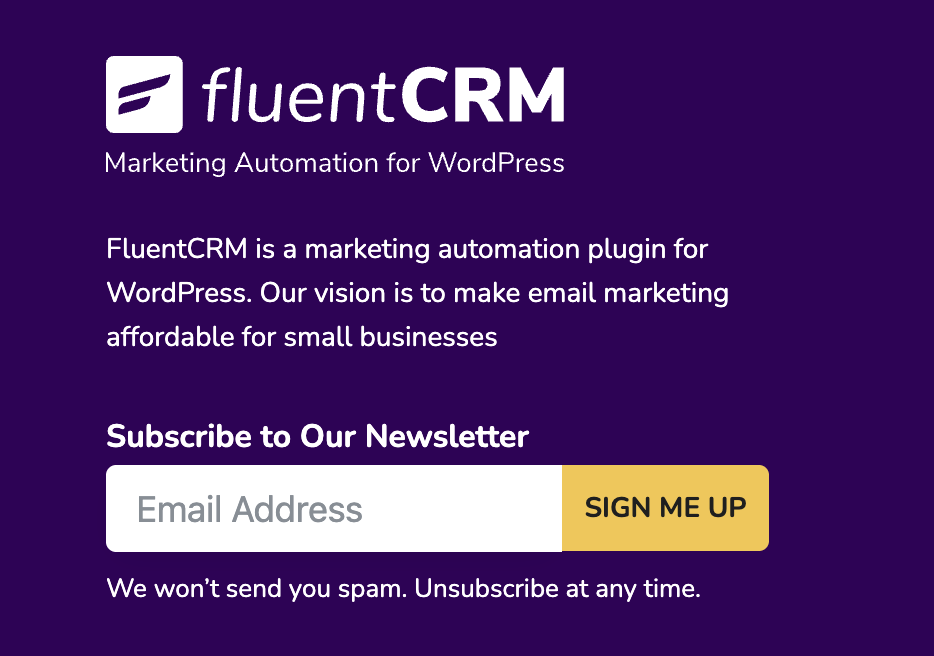
This promise is the beginning of the journey.
The Guardian
The Guardian sets an expectation of when the audience can get the email newsletter. Not to mention, they also have an option to share with friends.

Casper
Casper states the content of the newsletter one might receive, clearly. They also add a link to their privacy policy, right below the subscription box.
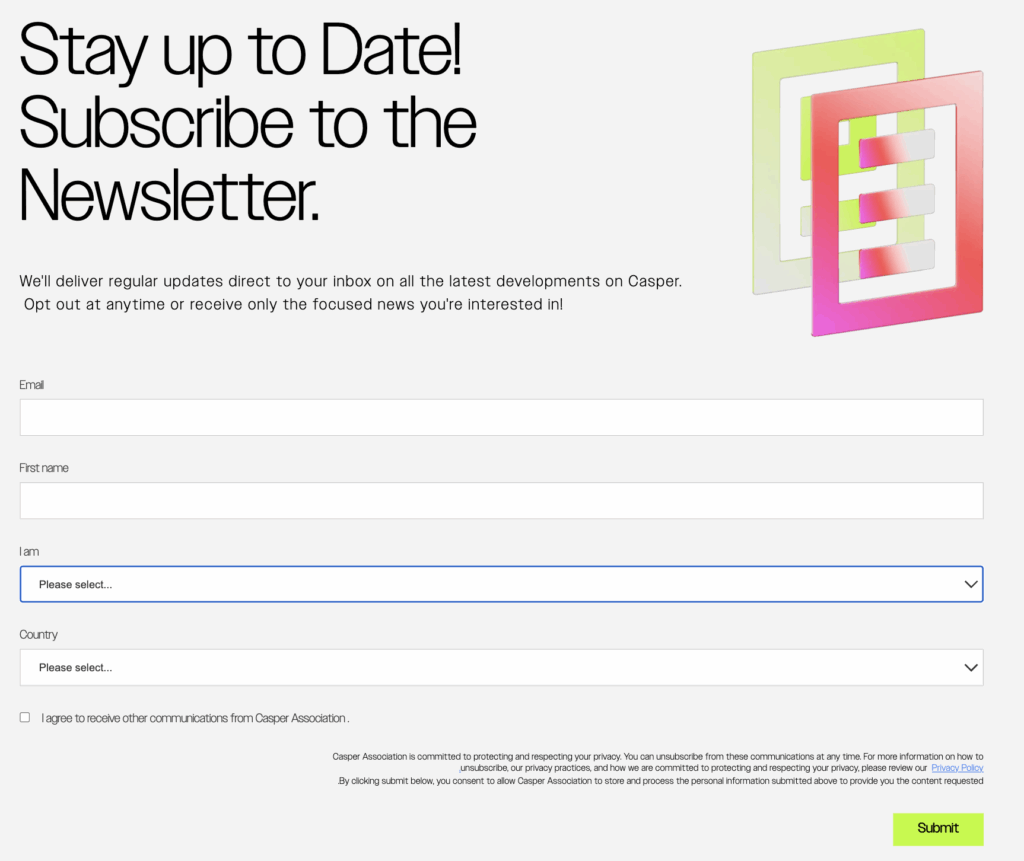
Robinhood
Robinhood makes subscribing very interesting by giving the option to sign up for Quote, SEC Filing, Event, News, and Weekly Summary. The audience can choose specifically what they want to be notified of.
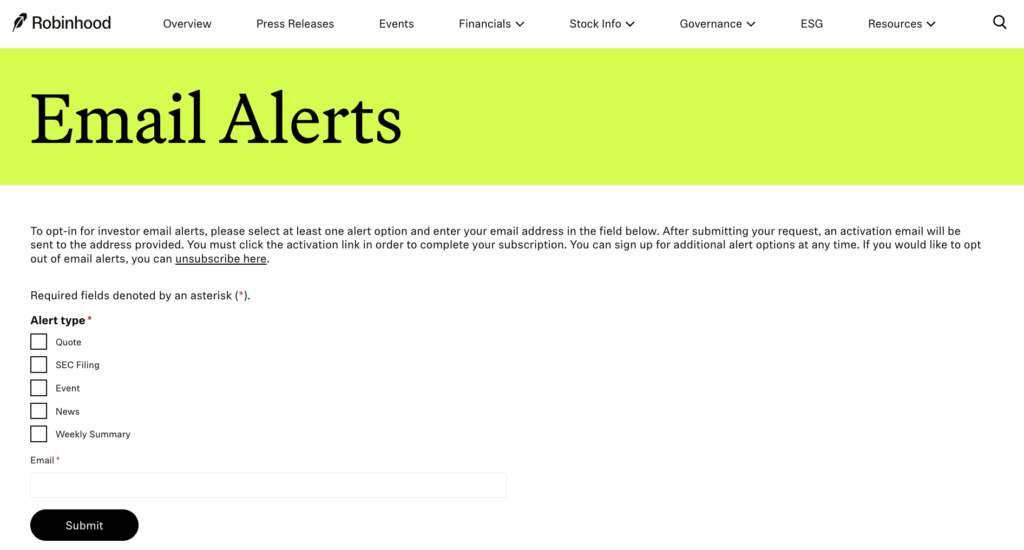
Apple
Apple includes a clear unsubscribe header in its email newsletter, making it very easy to unsubscribe.

TheSkimm
TheSkimm knows the struggle of getting too many emails. So, they included various types of email to sign up for the subscriber. Not to mention, each email type includes the content details that the audience is signing up for.

Airbnb
Airbnb mentions exactly what subscribers are getting in their email, including their Nondiscrimination policy, privacy policy, and Terms of Service. They also have an option “Not to receive marketing messages”.

All of these brands used email compliance permission to present their brand as more trustworthy and thoughtful.
Quick Tip: Along with email compliance, you need to make sure that you are at least not sending bad emails. You can take a look at these bad email examples to know what not to do.
Practical Tips to Stay Compliant
Compliance doesn’t have to be complicated. By following simple practices, marketers can stay on the right side of the law while keeping campaigns effective and engaging.
- Process unsubscribe requests quickly and respect user preferences to maintain trust and reduce spam complaints.
- Integrate compliance checks into every campaign — verify consent, review content, and test unsubscribe links before sending.
- Automate consent tracking, subscription confirmations, and list hygiene through your CRM to ensure consistent compliance.
- Audit your email lists and consent records regularly to spot risks early and maintain clean data.
- Train your marketing team on data privacy, deliverability, and global email laws to keep practices aligned.
- Use AI responsibly and rely only on approved data, and avoid invasive personalization to safeguard user privacy.
- Maintain a compliance-first workflow that keeps your campaigns ethical, effective, and scalable.
Comply Smart, Deliver Better
Email compliance protects your reputation and keeps your messages where they belong: the inbox. Every rule you follow, from consent forms to unsubscribe links, builds a foundation of trust that drives better engagement and stronger deliverability.
As Gmail, Yahoo, and other providers tighten their policies, compliance has become inseparable from performance. The more transparent and respectful your approach, the more your emails get seen, opened, and remembered.
So keep your data clean, your permissions clear, and your automation ethical. That’s how great marketers stay compliant and deliver.
Frequently Asked Questions
Some frequently asked questions you might be wondering about:






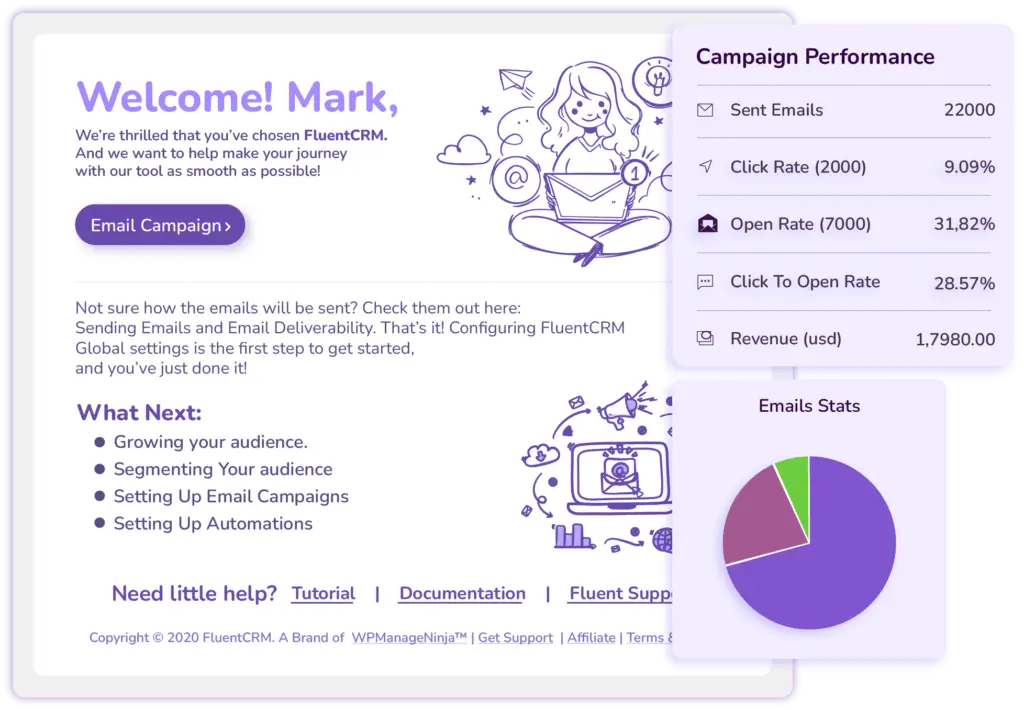
Leave a Reply